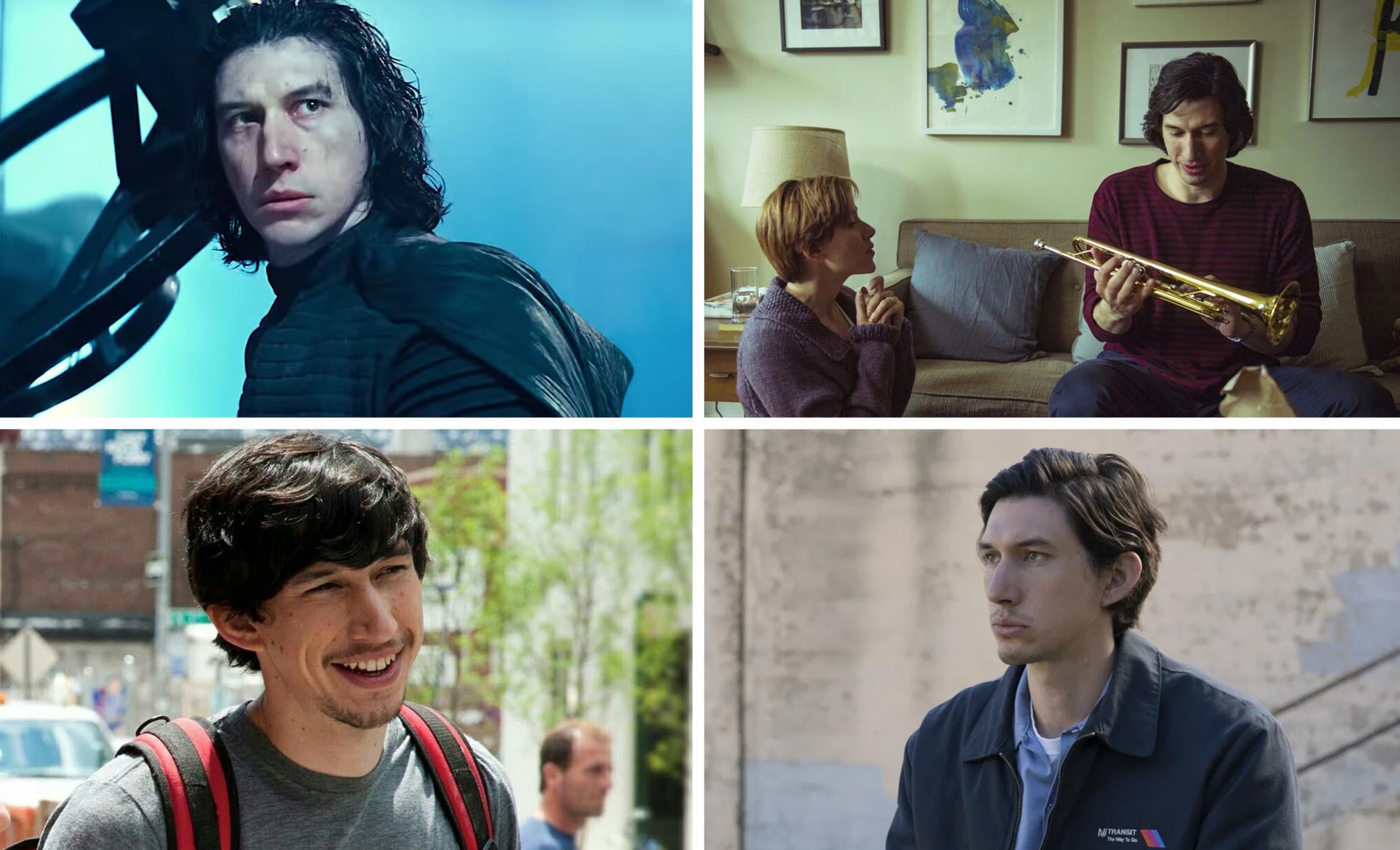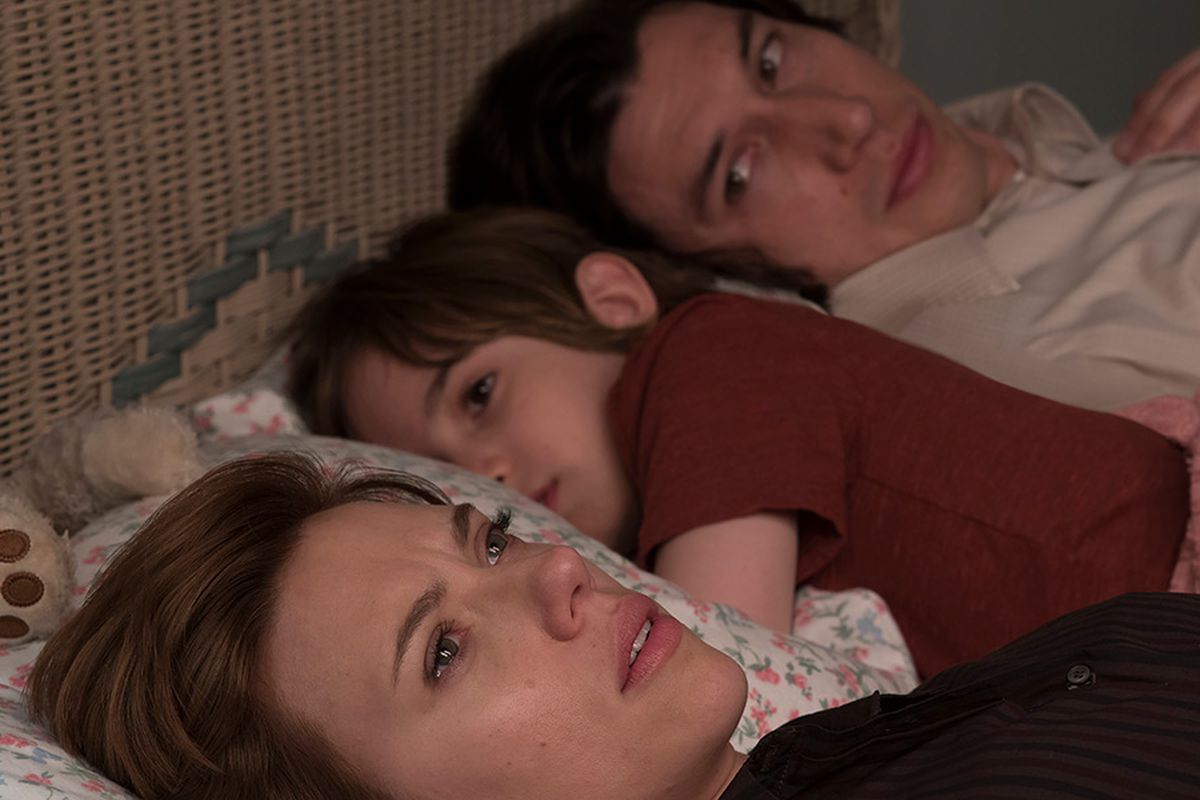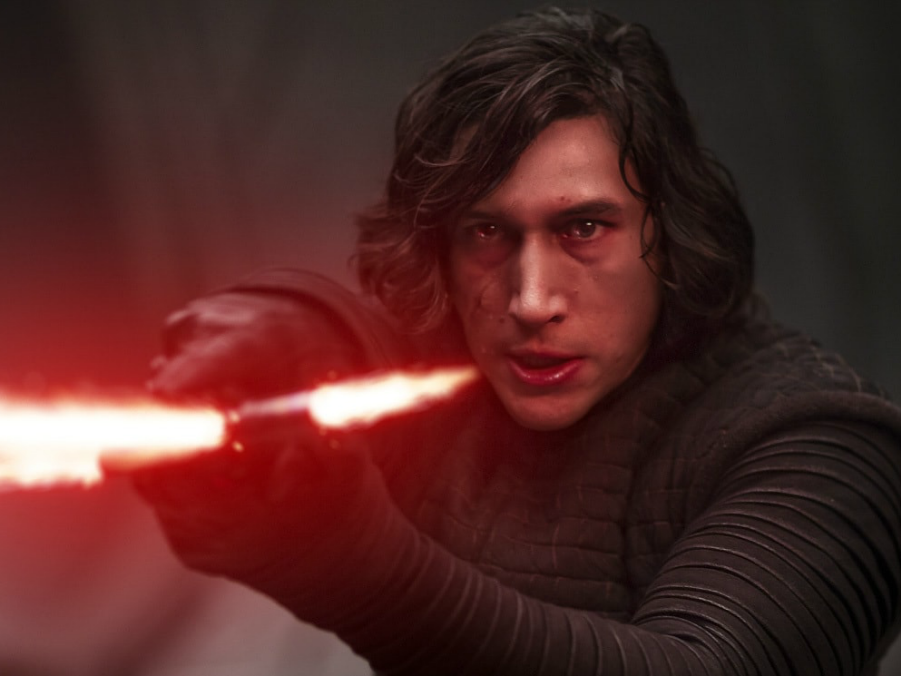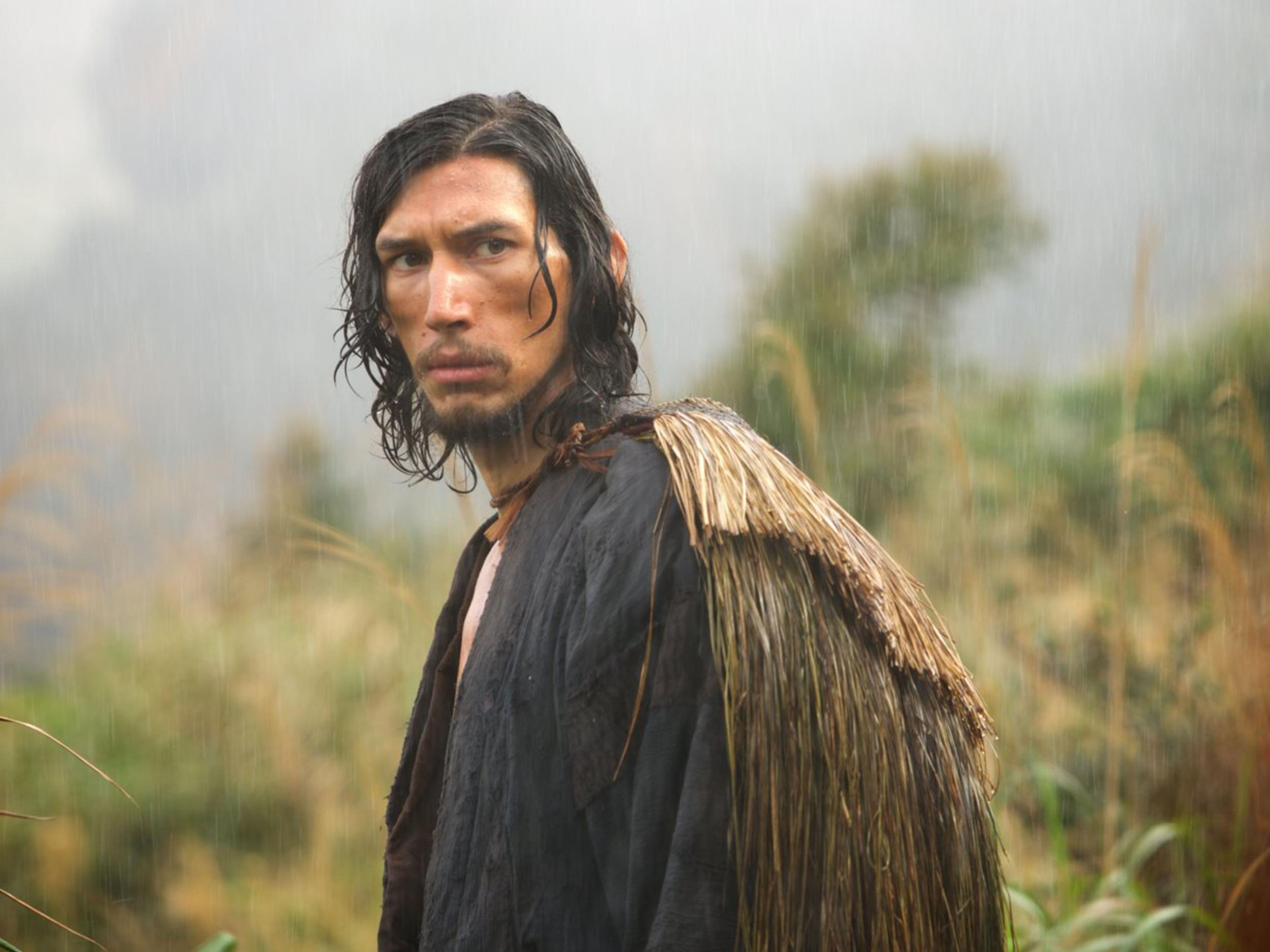Adam Driver is his generation’s most sought-after leading man, and it’s all thanks to Star Wars
As the actor hits the screens next week in ‘The Rise of Skywalker’, Geoffrey Macnab considers how he’s actually best in offbeat roles rather than as a mercurial, lightsaber-wielding villain

There is a sublime moment late on in Marriage Story, Noah Baumbach’s Oscar-tipped, Golden Globe-nominated divorce drama, in which Adam Driver slits his arm. No, it is not a suicide attempt. Charlie (his character) has to prove to a court observer that he is a fit and proper dad to his young son, Henry. His glum-faced visitor watches him cook dinner for the boy. Desperate to cheer her up, he shows her a trick with a tiny knife – but the blade doesn’t retract when it should. Charlie ignores the blood pouring from his wound, continuing to make small talk in spite of the vast red stain forming on the sleeve of his shirt.
Adam Driver plays the scene perfectly. It’s a study in awkwardness and social embarrassment, underlining Driver’s versatility. We will be seeing Driver back on screen next week as Kylo Ren, the grandson of Darth Vader, in the new Star Wars film, The Rise of Skywalker. Supreme Leader of the First Order and Master of the Knights of Ren, he is the ultimate alpha male. He dresses in black and knows just how to use a lightsaber. In Baumbach’s movie, though, the same actor is shown with rolls of kitchen towel wrapped around his bloody arm as a makeshift bandage, lying helpless on the kitchen floor after accidentally stabbing himself with a penknife.
Driver’s screen career stretches back less than a decade, but he is already established as his generation’s most dependable and sought-after leading man, an actor who can move seamlessly between US independent cinema and the world of George Lucas; who can play a small-town bus driver in one film and an intergalactic villain in the next.
Driver was first seen on screen as a sex symbol (as Adam Sackler in Lena Dunham’s HBO series Girls), but is also often cast to equally strong effect as obsessive, nerdy types. In Scott Z Burns’ recent drama, The Report, he was very convincing as the Senate investigator looking into allegations of CIA torture. When other characters say to him that he looks as if he has been up all night, you know exactly what they mean. He has that pallid, wild-eyed appearance of the researcher so consumed with his paper chase that he has completely forgotten about such trivial matters as sleep, fresh air and personal hygiene.
Although the 36-year-old may have a reputation for Method-style intensity, losing 51 pounds for his role as the gaunt and tormented Jesuit priest in Martin Scorsese’s The Silence (2016), he is not the type of actor who can hide behind prosthetics. He is a hulking presence, 6ft 3in tall, with a Cyrano-like nose and protruding ears. He looks more or less the same in every role.
“Driver has the bearing of a self-effacing vulture and a face like an Easter Island statue,” The New Yorker recently wrote of him in a profile piece that was supposed to be flattering. The magazine tried hard to work out just why he is currently in such demand. Driver, the article suggested, was a “throwback” to the off-centre stars of the Seventies – Dustin Hoffman, Al Pacino, Jack Nicholson – who blurred the line between matinee idol and character actor and infused their roles with a sense of alienation and neurosis”.
However, that characterisation doesn’t sound quite right. Driver isn’t neurotic. Arguably, the secret of his appeal is that he is more in the tradition of an even older generation of screen actor – the James Stewart or Gary Cooper type – who showed steadiness and dependability, whatever the circumstances in which they found themselves. He has a down-to-earth, deadpan quality that more conventionally good-looking leading men of his era lack. As no profile of him ever fails to mention, he grew up in Indiana and served in the Marines. He will often seem detached, as if he is looking in at events, weighing up the options, rather than participating in them directly. The pathos and humour in that scene in Marriage Story in which he cuts himself comes precisely because of his very deliberate reaction to his own mishap.

Driver also knows how to use his size and physicality. When he appeared earlier this year in a Broadway revival of Lanford Wilson’s 1987 play Burn This in the role of the drug-addicted restaurant manager once credited with turning John Malkovich into a star, critic Ben Brantley called Driver “volcanic”. He likened the actor to “a runaway cyclone” and observed that he “exploded into view with an outsize fury that makes everyone and everything around him seem Lilliputian”.
In Marriage Story, we don’t see much of this explosiveness. Instead, the richness of the performance lies in its subtlety and understated tenderness. “It’s just about all those very raw feelings that stick with you that you don’t articulate,” Driver, whose own parents divorced when he was a child, noted of the film. Ironically, although his character is self-obsessed and sometimes pretentious, what shines through most in Marriage Story is Charlie’s devotion to his wife and son. He is almost equally solicitous towards the members of his drama company. He knows their foibles, understands their in-jokes and always remembers how they take their coffee.

One of Driver’s greatest screen performances was as the New Jersey bus driver/poet in Jim Jarmusch’s Paterson (2016). This was the actor at his quietest and most self-effacing. He is playing someone who lives by a very strict routine. Rather than chafe against the banality of his existence, Driver’s Paterson delights in the magic of the everyday. The main moment of drama in the film comes when his wife’s slobbery dog chews up the book in which he has written all his poetry. When this happens, it’s just as momentous in its own way as any standoff at the end of a Star Wars movie.

It is thanks to Star Wars, though, that Driver is so bankable. Terry Gilliam had been trying for decades to make The Man Who Killed Don Quixote (2018). Again and again, the funding would slip away or the cast members would fall ill. However, once Driver signed up, the project finally went ahead. “He may be the best actor of his generation,” Gilliam said after working with him, marvelling at the actor’s range. Driver played a cynical, embittered advertising director whose character gradually softens as he realised the chaos he had left in his wake. As the director told Indiewire, Driver is “such a strange actor, because if you just stand him there, he’s kind of goofy looking ... He doesn’t look like a movie star, but by the end of this film, he looks like one of the most romantic leading men I’ve seen in a while. He just transforms himself, and it’s not coming from anything external, it’s all coming from inside. It’s fantastic to watch”.
Driver may be most famous for playing a mercurial villain in the Star Wars films, but much of his best work has been done in indie comedies and offbeat dramas. The actor, who often has a dryly humorous quality on-screen, excelled (and was Oscar-nominated) as the Jewish cop undercover in the Ku Klux Klan who pretends to be a racist in Spike Lee’s BlacKkKlansman (2018). He was also very funny as the scheming, vinyl-and-VHS-loving hipster who so disconcerts a respected middle-aged documentary maker (played by Ben Stiller) in Baumbach’s earlier film, While We’re Young (2014).
The actor’s strange mix of gawkiness and charisma continues to fascinate Hollywood’s leading directors. They love his dedication. Martin Scorsese spoke in awe about the “perseverance” Driver showed while making The Silence and marvelled at the fact the actor “did the Spiritual Exercises of St Francis Xavier” to prepare for his role as the priest. “One of the finest, if not the finest of his generation,” Scorsese called him when appearing as part of a tribute to Driver at the Telluride Film Festival this autumn. That is the type of praise other actors might receive at the end of their careers but Driver, still in his mid-30s, looks as if he is just beginning to get going.
When Daniel Day-Lewis retired from the screen after Phantom Thread (2017), the film’s director Paul Thomas Anderson joked in an interview in The Irish Times: “I know, I know. I know. I’ve killed off the world’s greatest actor.” Some will argue that the emergence of Driver is already helping to make up for that loss.
Marriage Story is on Netflix now. ‘Star Wars: The Rise of Skywalker’ is released on 19 December. ‘The Report’ is currently showing in selected cinemas and is available on Amazon Prime
Join our commenting forum
Join thought-provoking conversations, follow other Independent readers and see their replies
Comments